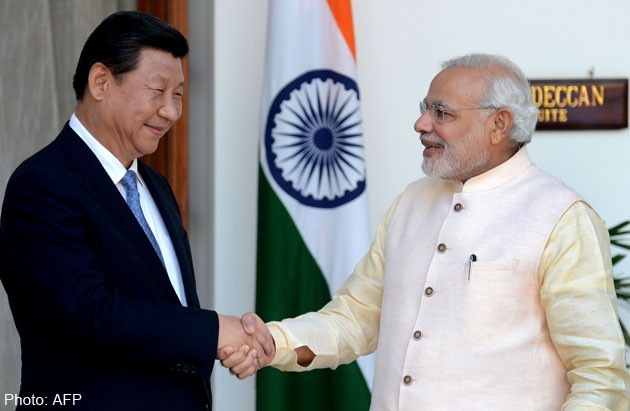Trade with caution

The breathless announcement - that China would invest US$100 billion (S$127 billion) in India over a five-year period - just before President Xi Jinping's arrival in New Delhi has given way to a more sober number.
Implementing even the scaled- down US$20 billion worth of agreements that were signed would still pose a challenge.
India's own recent record of working with Chinese investors and Africa's experience with massive Chinese investments offer lessons about such an opportunity.
The perception that there was a bidding war between China and Japan for India's affection was reinforced by a Chinese consul general, who bragged that Chinese investment in India would be three times that of Japan's.
The fact is that it is not just geopolitical imperatives that drive investment decisions. China, like Japan, has solid economic and business reasons to invest in India.
Sitting on a reserve of US$4 trillion, China needs profitable avenues to use its savings and find employment for its citizens. Chinese firms need places to invest their cash reserves, export their technology and skills and open new markets for their stocks.
Mr Xi hopes that by drawing India into China's growing economic empire and according India economic advantages, it can be wooed away from the American and Japanese embrace.
Under the radar, China has made remarkable inroads into the Indian economy. India's largest trade partner, China enjoys a US$36 billion surplus.
Forty per cent of India's power generation comes from Chinese equipment - a share that will grow when the power plants under construction come on stream.
China's communication technology giant Huawei, barred from the United States on suspicion of being a security threat, counts India as its biggest market.
Thanks to China's low-priced technology, the number of cellphone users has soared to 933 million, and the basic call rate in India remains the world's lowest.
But Chinese goods of all kinds have flooded the Indian market, threatening the domestic industry. Using China's low-cost power-generation equipment, too, has had some downsides. Machinery has often proved unreliable and the cost of repairs necessitated by sending heavy machinery back to China has eaten away the initial gains of low price.
Yet another problem in accepting China's low bid in international tenders on power and steel projects was its need to bring in thousands of Chinese workers to deliver projects on time.
In 2009, the Indian government woke up to the fact that about 30,000 Chinese workers had been brought into the country by the Chinese partner-firms, in violation of visa rules. They were all forced to return to China, causing delays and cost overruns.
Apart from the linguistic barrier, there is the security concern about importing a large Chinese workforce while domestic unemployment is high.
Timely completion of the Chennai-Mysore high-speed railway project is likely to require the import of Chinese engineers and technologically competent workers. But a senior Indian official has said, privately, that it would not be allowed.
Similarly, recent pacts for construction and maintenance of industrial parks, railway carriages and highways are likely to call for skilled Chinese workers if the projects are to be finished in the stipulated time and with quality.
(A 612km-long railway project in Kenya signed last spring would require 5,000 Chinese to work beside 30,000 Africans.)
In Africa - where China has invested hugely in developing infrastructure, railways, housing, power and telecommunication - there have been complaints of poor quality construction and a blow to the domestic industries from a flood of cheap Chinese goods.
While cheap Chinese credits to IndiGo to buy Airbus planes and modernisation of the energy and telecom sectors would benefit India, economic cooperation would probably be hobbled by concern about poor quality of equipment and suspicion, as long as border issues remain unresolved.

This article was first published on Oct 8, 2014.
Get a copy of The Straits Times or go to straitstimes.com for more stories.